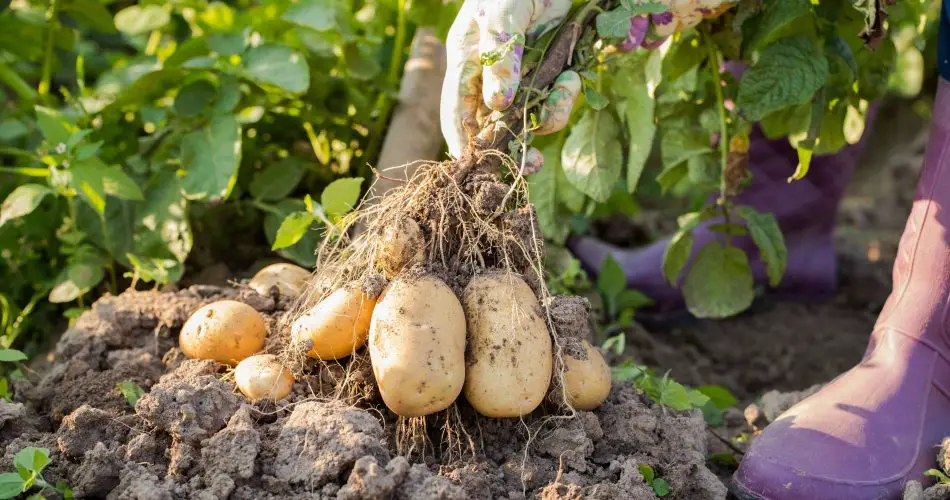
Growing potatoes year-round requires some planning and adaptation to different seasons and climates. While potatoes are traditionally grown in the spring and harvested in the fall, it is possible to extend their growing season and cultivate them throughout the year with the right techniques. Here’s a guide to growing potatoes in every season:
- Spring Planting:
- Start with certified disease-free seed potatoes. Cut larger seed potatoes into pieces, each containing at least one or two eyes.
- Prepare the soil by loosening it and incorporating organic matter, such as compost or aged manure, to improve fertility and drainage.
- Plant the seed potatoes in shallow trenches, spaced about 12 inches apart, and cover them with soil. As the plants grow, gradually mound soil around the stems to encourage tuber development.
- Provide consistent moisture and keep the soil evenly moist but not waterlogged.
- Once the foliage dies back and turns yellow, usually in late summer or early fall, it’s time to harvest the potatoes.
- Summer Planting:
- In regions with mild climates, you can plant a second crop of potatoes in mid-summer for a fall harvest.
- Follow the same planting and care instructions as for spring planting, but adjust the timing to take advantage of the warmer temperatures and longer days of summer.
- Fall Planting:
- In warmer climates or regions with mild winters, you can plant potatoes in the fall for a winter harvest.
- Planting in late summer to early fall allows the potatoes to establish before the cooler weather sets in.
- Provide protection from frost by covering the plants with row covers or mulching heavily around the base of the plants.
- Winter Planting:
- In regions with mild winters or in protected environments such as greenhouses or cold frames, you can grow potatoes throughout the winter.
- Choose cold-hardy potato varieties suited to winter growing conditions.
- Plant potatoes in containers or raised beds filled with well-draining soil. Position the containers in a sunny location to maximize sunlight exposure.
- Provide additional protection from cold temperatures by insulating the containers with straw or other mulching materials.
- Water sparingly during the winter months, as potatoes have reduced water needs when temperatures are lower.
- Year-Round Care:
- Monitor the soil moisture levels and water as needed, adjusting the frequency based on weather conditions and the growth stage of the plants.
- Keep an eye out for pests and diseases, and take appropriate measures to control them to prevent damage to the potato plants.
- Rotate potato crops annually to reduce the risk of soil-borne diseases and pests.
- Harvest potatoes when they reach the desired size and maturity, typically 2-3 weeks after the foliage dies back.
By adapting your planting and care techniques to different seasons and climates, you can enjoy a continuous supply of fresh potatoes year-round. Experiment with different varieties and growing methods to find what works best in your specific environment.
